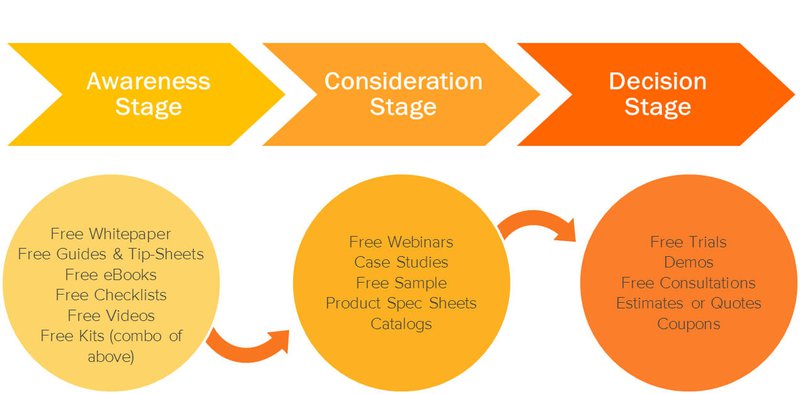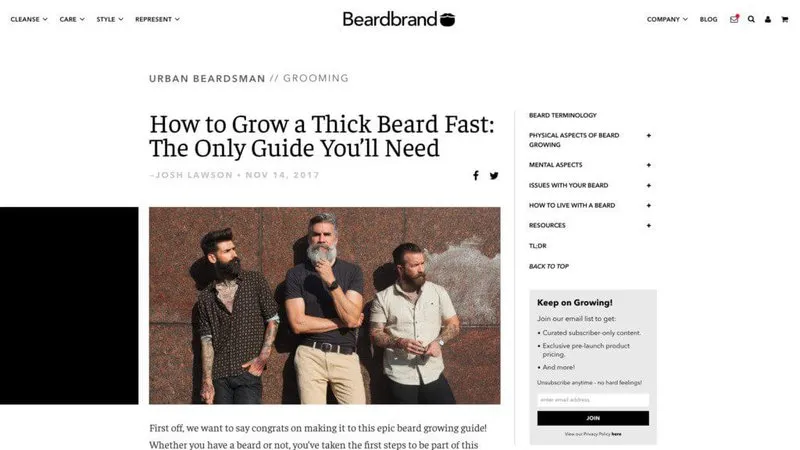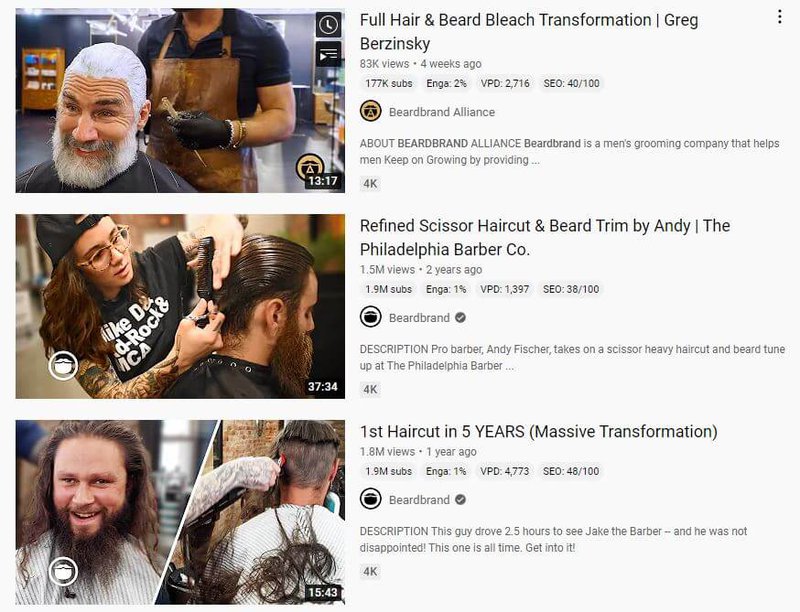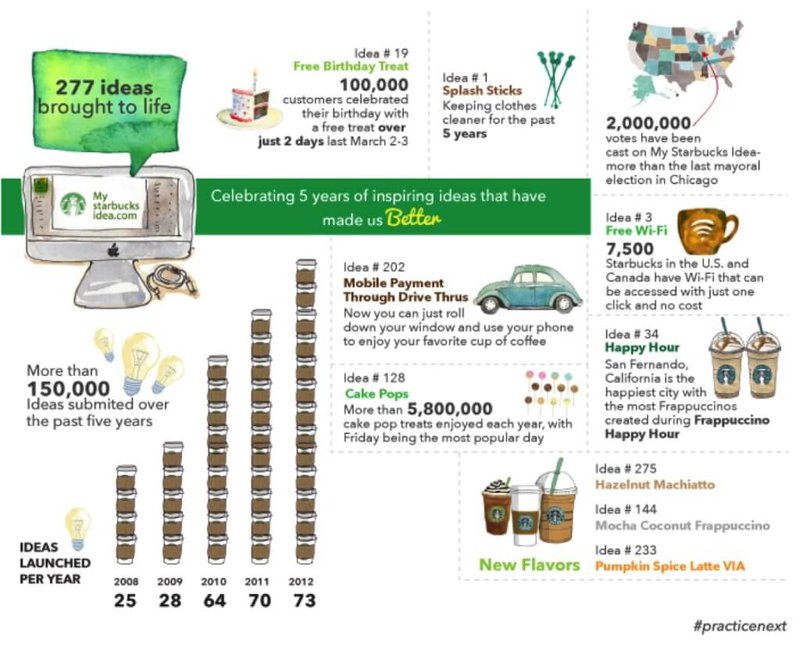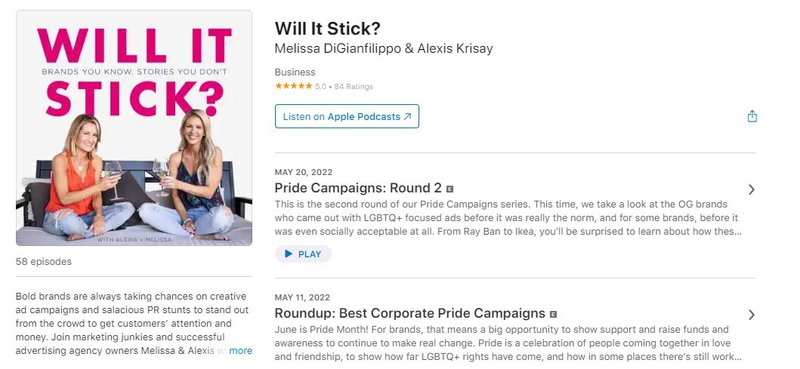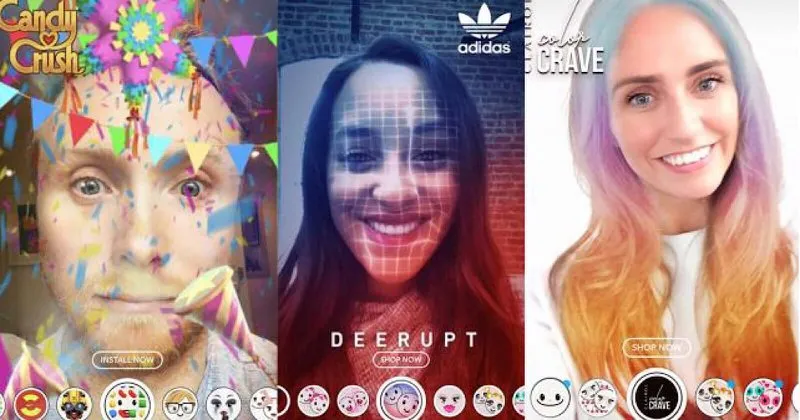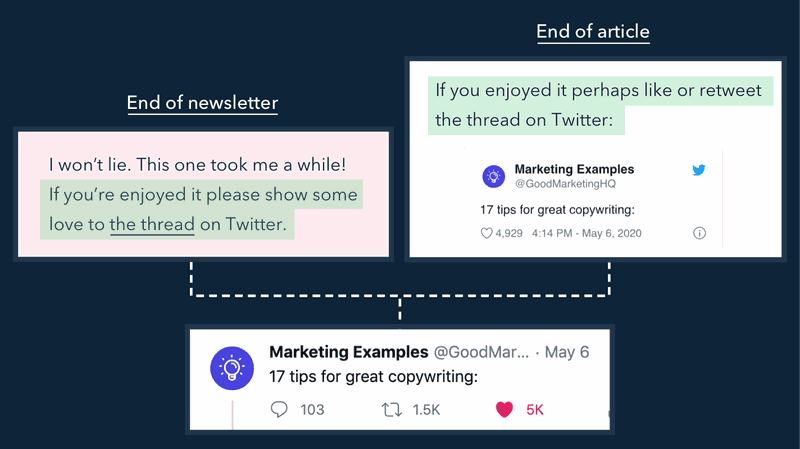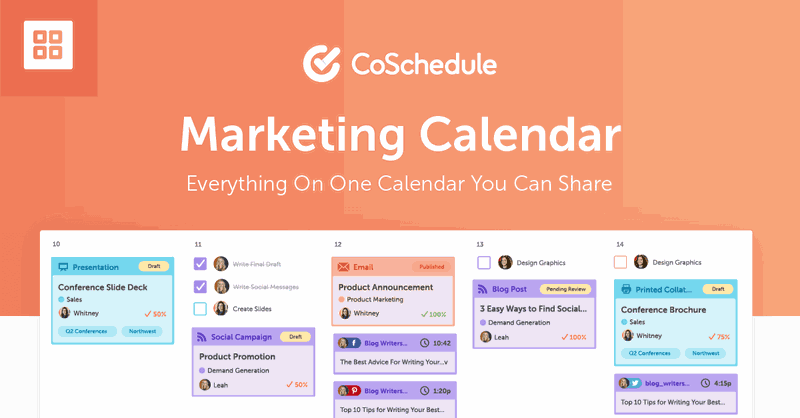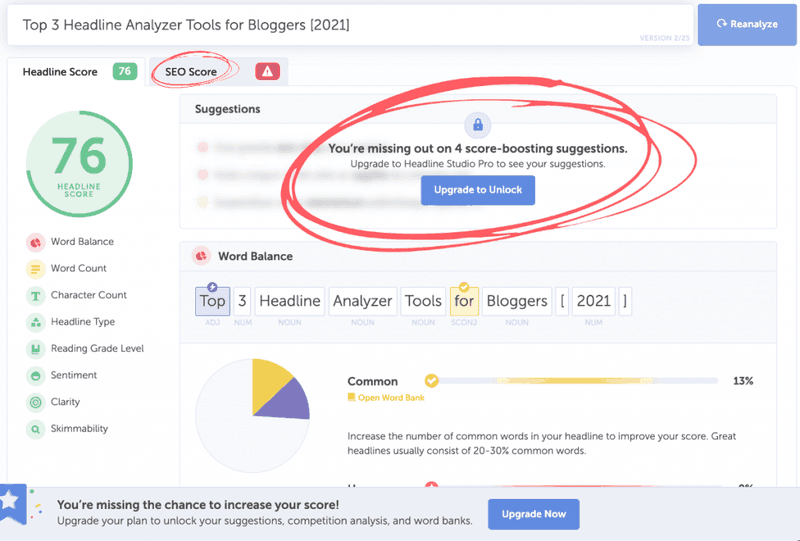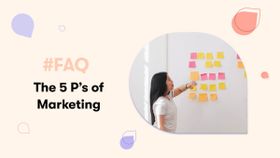Content Marketing: How to Create Effective Content that Ranks & Converts in 2024
The ultimate guide to Content Marketing: types of content you need to produce to get more leads, how to create a content calendar, and develop the right strategy.
Updated November 7, 2024.

In 1985, John Deere released The Furrow, the first magazine of its kind, and (according to many) content marketing was born. Instead of selling farming equipment via catalogs, John Deere aimed to do something entirely different: educating farmers about the latest developments in agro-technology.
Little did they know they were about to revolutionize not just the world of farming, but also worlds that didn’t even exist until a couple of decades ago: SEO, digital marketing, SaaS, eCommerce, and more.
It’s been more than a century since the release of The Furrow. Not only is the magazine still going strong, but it has inspired thousands of companies to use the same model for educating, enticing, and entertaining their target audience. From HubSpot to ClickUp and from Coca-Cola to Duolingo, everyone’s using some form of content marketing these days. And it’s been the secret behind their growth.
So how do you build and execute a reliable, scalable, and efficient content marketing strategy? You’re in luck, ‘cause that’s exactly what we’re tackling in this article. Read on to find out more.
What is content marketing?
Content marketing is a strategic marketing approach focused on creating valuable assets, with the purpose of educating and/or entertaining the target audience, to drive interest in the products or services a brand offers.
What content marketing isn't:
- Your site's blog section. Content marketing is so much more than that! It involves all content, whether text, audio, visual, or a combination.
- Sales material or ads. Its purpose is to educate and bring value to your audience.
- SEO content. Search Engine Optimization best practices are an important tool, but need to be part of a larger strategy, and no, not all content needs to be SEO.
It's all of that and more. Content marketing should be seen as a holistic approach to earning your audience's attention, trust, and, eventually, loyalty. Content is not about selling: it is about creating a relationship with your existing and potential customers.
Another thing that content marketing isn't? New. According to the Content Marketing Institute, content marketing has been around since the 18th century
Why is content marketing important?
Having a clear content marketing strategy in place will help you win on SEO ground, and drive engagement and actual revenue.
In fact, the vast majority of marketers use content in their strategy:
- 71% of marketers believe content marketing is more important in 2022 than it was in 2021
- 73% of marketers have a content marketing strategy, with 40% of them reporting that their content marketing strategy is documented, while 33% say it isn't.
- 82% of marketers actively invest in content marketing
There's so much buzz around content marketing, and with good reason. It can help you:
- Drive more brand awareness
- Generate more leads for the top of the funnel and help move them through the other stages of the buying cycle
- Build trust with your target audience
- Create a sense of loyalty among your existing customers
- Enable your Sales team for outbound marketing
Sounds enticing, right?
Well, there's a catch: content marketing needs to be done right. To make it really work for your business, you need a calendar, a content planner, a distribution model, and a proper strategy to connect all the dots. Furthermore, you need to make sure your content is valuable, relevant, and consistent.
Most businesses lack one or several of these elements. One of the most common mistakes brands make is they chase a list of high-volume keywords just for the sake of it. It’s a strategy we like to call “spray and pray.”
It’s super inefficient and if you choose to go that route you'll very soon run out of ideas, keywords, and prayers.
Here's a better way to look at your strategy for creating high-quality content.
How content marketing works
Content marketing works by educating, delighting, and entertaining your target audience. When they’re finally ready to make a purchase in your niche, you’re top of mind.
Content marketing is centered on the buyer’s journey which is divided into three stages:
Awareness stage
The awareness stage is where you attract the attention of your target audience.
The key here is to be where your target audience is spending their time online and meet them halfway with relevant content.
Here are some content examples for the awareness stage:
- A travel agency creating an article about the top affordable beach destinations for 2024
- A construction business creating an article about choosing energy-efficient materials for a new house
- A software company that sells HR tech creating an article about the latest HR trends in the post-COVID19 era.
Consideration stage
When the buyer is in their consideration phase, they know about your business and are actively looking for a solution to their problem. This is where you need to show that you understand their needs and pain points, and offer a solution in the form of your product or service. It's also where you need to set yourself apart from your competition as the best solution for your potential customers.
To do this, you need to create content that educates and informs your target audience. This type of content will be a little more product-driven but it's still created with the purpose of educating, rather than selling. Some examples here could include:
- A design agency creating a listicle about the best design ideas of 2024 and including a couple of their own projects in the content
- A plumbing company publishing an article about the top mistakes people make when they hire a plumber
- A restaurant creating an article or a guide on how to choose the best menu for a special event
Decision stage
At this stage, the buyer is already familiar with your product, they know the market, and they are shopping around for the best option. At this point, you need to convince them you are the best there is – not your competition, not a product that does something slightly similar.
You are an authority in your industry, you have social proof (people vouching for the quality of what you offer), and you have just the right pricing for your potential buyers too. What your content needs to achieve at this stage of the buying process is making your future customer choose you.
Some examples of content created for the decision stage include:
- A cybersecurity company creating a white paper about the cybersecurity industry predictions for the next year, with quotes and insights from specialists in their own organization
- A software development company sharing testimonials from their previous customers
- A freelance designer creates a quick presentation with some of their best work
The buying journey doesn't have to be over-complicated. Sure, people rarely make purchases as soon as they've landed on the website. But the main goal of content marketing is to entice them again and again until they are ready to buy.
It might be two weeks or six months from now, depending on how long your sales cycle is. But when the buying decisions come to be, what's important is to make sure you already exist on your target audience's radar.
Want to see content marketing in action? Here's how Beardbrand skyrocketed its business using funnel-based content.
Types of content marketing
Content comes in a wide variety of shapes and formats. There's no one-size-fits-all solution and that’s why it's important to understand the different types of content and choose what works for you and your target audience.
1. Blog content marketing
Blog content is one of the most common forms of content marketing, and it's also one of the easiest to produce. A blog is a great way to:
- Be where your target audience is (by creating content around the topics they're interested in)
- Get in front of your potential customers (by ranking for relevant keywords)
- Build trust with your target audience (by providing them with valuable information)
- Show off your company's personality (by giving your readers a peek into your culture and values)
Pro tip: Looking to skip the learning curve and hire the perfect content expert? Here’s our list of the top content writers you should talk to.
2. Online content marketing
Any material published online can act as online content. However, in a more specific sense, "online content" most commonly refers to web pages. Homepages, landing pages, product pages, comparison pages – they are all online content and they can all help you create a connection with your potential buyers.
3. Social content marketing
Social media is an extremely powerful tool for connecting with your target audience and with your potential buyers at every stage of their buying journey.
It is worth noting that social media might be a less measurable channel (in terms of how your content there influences the customer). However, it has grown to be one of the most powerful channels, as people spend an average of 147 minutes a day on social media.
4. Infographic content
Infographics are one of the most popular types of content because they are digestible, interesting, and shareable. They are also a great way to break up text-heavy content and add some visual interest to topics that would otherwise be on the dry side.
Infographics do cost more to produce than other types of content, so plan ahead and allocate your design resources wisely.
5. Podcast content marketing
Podcasts are an effective way to get your message out there. Over 60 million people listen to them and 38% of listeners also purchase products mentioned in podcasts.
What makes podcast special is that they’re great for listening on the go, and they provide a much more personal experience for the listener. Podcasts don’t feel like selling, just a simple discussion between people with a shared interest.
6. Video content marketing
Video is one of the most engaging types of content out there. The average person spends 100 minutes a day watching videos. And more than 90% of brands say video marketing works for them. If you want to tap into video channels, make sure you create helpful, emotional, and well-structured content.
You have to find that middle ground between making your content very personal and still keeping it professional. Also, it doesn’t have to get expensive. Don’t let huge budgets and video equipment get in the way. Lots of brands are using TikTok, recording videos on shoestring budgets, and seeing amazing results.
7. Paid ad content
Paid ad content is the content you create with the specific purpose of promoting it through paid channels, like Google Ads or Facebook Ads. This type of content is usually shorter and more to the point than other types of content. It's also more sales-oriented, as the purpose of this type of content is to generate leads or sales.
8. Live streaming content marketing
Live streaming is broadcasting your video (or audio) live. Some of the most common platforms for live streaming include Twitch, YouTube Live, and Instagram Live. The advantages of using this channel revolve around real-time communication, which allows participants to ask questions and participate in discussions as they are happening live.
Live streaming is perfect for Q&As, product demos, webinars, and other types of content that would benefit from a more personal touch.
These are just some examples of content marketing. New channels can pop up at any time – and content marketing teams need to evolve and adapt. The basics are always the same, though: do less selling, more educating, and building relationships with your audience.
How to get started with content marketing
Now that you understand how content works, and the various types of content you can create, let’s talk about how you get started.
Identify your audience
In order to produce content that sells, you first need to understand who your target customer is, what their needs and wants are, and what kind of content they want to consume. Do this by:
- Talking with customers
- Looking at your Google Analytics (as well as data from other platforms)
- Assessing your existing customer database
- Running surveys, polls, and quizzes
- Trying different types of content, on different channels, measuring them, and seeing what works
Pick the right format
Content comes in many formats: long-form, short-form, video, blogs, visual content, you name it. There's no given recipe as to what will work and what won't for you, so the best thing you can do is... try, fail, and then try again.
Start with a couple of formats and see how they perform. If you're happy with the results, great! If not, adjust and move on. Over time, you'll develop a clear understanding of what type of content your audience prefers and what gets them to convert.
Determine your content schedule
Posting an article today, a video three weeks from now, and an infographic every six months doesn't work. Part of what makes content work is consistency. Without it, you're pretty much wasting your time and your money.
It's best to set a posting schedule and then stick to it as much as possible. Sure, things happen – but if you're consistently pumping out high-quality content that resonates with your audience, the results will come.
Effective content stacks up: piece after piece, it helps you reach more people, build more authority, and drive more revenues. However, consistency is crucial if you want your content marketing projects to actually work.
Follow best practices
There's a reason they call them best practices: they are tried and tested methods that help you achieve desired results. When it comes to content marketing, there are certain best practices you need to follow in order to make the most of your efforts, like:
- Optimize your content for SEO through extensive keyword research
- Use social media platforms to amplify your reach
- Repurpose content and re-distribute it on various channels
- Use internal links
- Use the content channels your audience is likely to be on
- Strive to create compelling content
- Measure and analyze your results
- Iterate and improve upon your processes, topics range, and content types or formats
- Create visual content that is both attractive and informative
Pick the right distribution & promotion strategy
There's no point in producing tons of content if it just sits there collecting spiderwebs and digital dust. You need to actively promote your content if you want anyone to see it, much less engage with it.
This is where most people get it wrong: they focus on content creation but pay no attention to content distribution and promotion. If you want your content marketing efforts to be successful, you need to distribute and promote it. Some ways to do it include:
- Search engine optimization
- Social media marketing
- Email marketing
- Paid advertising
- Influencer outreach
- PR and publicity content syndication
- Community management on Slack, Reddit, Quora, Discord, and so on
Modern content marketing cannot work without distribution!
Report on your results and KPIs
How will you know if content works if you don't measure it?
Sure, you can't measure how informed someone feels after reading your guide and you can't measure how many times someone's smiled watching your latest TikTok. You can, however, measure:
- Website traffic
- Search impressions and clicks in Search Engine Results Pages
- Leads generated
- Sales closed
- MQLs (marketing qualified leads) and SQLs (sales qualified leads)
- Social media engagement (likes, reactions, comments, shares)
- Social media followers
- Open rates and click-through rates on emails
You can also use surveys and polls to assess whether or not people find your content interesting and helpful. They might be more difficult to run because most people don't have time to spend on surveys, but they're worth it. Especially if you include an open-ended question where people can leave their honest opinions and suggestions.
Keep in mind that, to measure content efforts correctly, you must first make sure you set clear goals and objectives. Writing down a SMART goals plan can help you make sure you track what matters, instead of accounting for random KPIs just for the sake of it.
Content marketing tips
Say you've got everything you need to set up an effective content strategy. Is there something else you should know about building successful content marketing projects?
Well, yes. Entire libraries could be written about content marketing, examples of content marketing strategies and tactics, measuring content, the history of content, and so on.
But if we had to narrow it down to the most actionable tips, it would be these:
Use analytics
Hunches are great. Data is better.
Some of the best content ideas come from good data and analytics. Some of the best ways to optimize your existing content (and your content calendar) are also data-driven.
Sure, there are types of content sourced in communities, sales calls, and from other customer-facing teams, but on most days, data will give you the most actionable insights.
There are a ton of great data sources for content marketers - Google Analytics, Google Search Console, social media analytics, email marketing platforms, SEO tools like Semrush or Ahrefs, and Chrome extensions for keyword research – the list goes on.
Whatever tools you're using, make sure to check in on your data regularly and let it guide your content decisions. Whether you're running content marketing for eCommerce or any other industry, analytics will help you create content your ideal customer actually wants to consume.
Use A/B testing
You're a content marketer, not a fortune teller. Sometimes, there's just no realistic way to tell if something will work or not.
And in those situations, A/B testing is the best option you have.
A/B testing, also known as split testing, is the process of showing two different versions of a piece of content. The key is to make sure you only change one variable at a time.
For example, if you're testing a landing page and you're not sure which tagline/ H1 works best, that should be the only element on the page you change. Everything else should stay the same. That way, you can track the impact of the change.
Some tools you can use for A/B testing include:
- Optimizely
- Google Optimize
- VWO (Visual Website Optimizer)
- AB Tasty
- Content Experiments (built into Google Analytics)
Organize your content calendar
Having a content calendar is key to staying consistent with your content..
Without a content calendar, you can easily become the victim of the publish-now-think-later mindset. And when that happens, it's easy to start producing content that fits differently from the rest of the pieces you have already published.
A content calendar can:
- Provide you with clarity and direction
- Help you plan and budget your time and resources
- Help content marketing team members collaborate better (among themselves and with other departments)
- Make it easier to repurpose and reuse content
- Help you hit deadlines
- Make it easier to measure and track your content marketing efforts
- Ensure content ideas aren't left behind
- Help you build a content library (and audit it regularly)
- It can be a good way to take your content mapping to the next, more actionable level
There are various ways you can build your content calendar:
- A simple Google Sheet
- Project management tools like Asana, Jira, Monday, ClickUp, or Trello
- Documentation tools like Notion
In terms of structure, barebones content calendars should at least include a Backlog, a Work in Progress, an Editing, and a Published/ Done column.
Optimize your headlines
Headlines are important for two reasons:
First, they're what people see before they decide whether or not to click on your content. In fact, Copyblogger claims eight out of ten people read the headline, and only two out of ten people read past the headline.
Second, headlines are also very important from an SEO standpoint. As a general rule, headlines should have between six and 13 words, and they should have no more than 60 characters to be fully optimized for Google's algorithm.
Sure, a well-optimized headline doesn't guarantee you'll rank #1 for your target keyword - but it can definitely help you get more traffic and increase time on page.
If you're looking for a tool to help you optimize your headlines, CoSchedule's Headline Analyzer might just be what you need. It can provide you with some pretty good insight into whether or not your headlines feel actionable (and are SEO-friendly too.)
Include lots of images and videos
Visual content is important from multiple points of view. To start with, people process visual information faster and more efficiently than they process text.
Also, visual content can make your content more SEO-friendly and help you break text blocks to make it easier to consume. Use images and videos to enhance your content and make it more engaging.
Tips to create engaging images & videos:
- Ask your customers to take pictures of themselves
- Create a giveaway for the best piece of UGC
- Use an influencer tool to find the right influencers
Takeaways
Content marketing has developed into a marketing discipline in its own right. At the intersection of communications, journalism, SEO, email, social media, and even PPC, content marketing is slowly becoming the beating heart of every marketing plan.
Clearly, running all of the content operations and keeping up with the latest content marketing trends is a challenge.
Content involves a lot of moving parts, some of which should be tightly connected to your overall digital marketing strategy. So it's easy to see why business owners, founders, and even in-house content experts get easily overwhelmed by the sheer number of plates they have to keep in the air to make sure they achieve their goals.
The good news?
You don't have to do it all on your own.
At Mayple, we have gathered some of the very best content marketers in the world: they're vetted, they have a proven track record, and we'll make sure to connect you to someone who gets your industry, inside and out.
In other words, they have all the content marketing skills you need to succeed, drive more traffic, build a stronger brand, and convert more site visitors into actual buyers. Whether you need a content marketing agency or an in-house person, we got you. Get started here.
FAQs
What types of content marketing are there?
There are multiple types of content marketing, including blogging, social, infographic, video, streaming, and so on. Virtually any type of content on the internet can become a marketing asset when used correctly (and for the right audience).
What are the stages of the content marketing purchasing funnel?
The content marketing purchasing funnel consists of three main elements:
- Awareness stage
- Consideration stage
- Decision stage
Each of these stages is associated with different types of content, according to where the potential customer is in their buying process.
What is an example of content marketing?
Content marketing includes things like blog posts, newsletters, podcasts, social media posts, videos, and infographics.
Valuable content is meant to provide useful information that delights users and attracts them to your brand. Famous examples include the "Got Milk?" and the Apple vs Microsoft Super Bowl commercials.
What do content marketers do?
A content marketer's job includes planning, creating, and distributing content to attract potential customers and increase social shares and organic traffic.
Content marketers are usually in charge of editorial calendars, creating email newsletters, creating a long-term strategy for SEO efforts, and executing content marketing campaigns.
What are the 7 steps of content marketing?
The 7 steps of content marketing are:
- Define your goals
- Establish your target audience
- Research and identify keywords that solve their challenges
- Run a content audit
- Pick the content types you want to use
- Create a content calendar
- Publish your content
- Measure and optimize
What are the 3 types of content?
All the different content you could publish on your page breaks down into three core types:
- Creation
- Curation
- Creative curation.
What are the 5 rules of content marketing?
The 5 rules of content marketing according are:
- Invest time in understanding what your audience needs
- Dedicate resources to creating a comprehensive content marketing strategy
- Have high editorial standards. Don't settle for average content, make every piece exceptional.
- Build a presence on social media channels and use them to promote your content to your audience
- Be consistent. Have a content marketing plan and post consistent content to see ROI.
What are the 5 benefits of content marketing?
If you do content marketing the right way then, these are the following benefits:
- Better traction on social media
- You will build trust
- You'll generate more leads
- Improve conversions
- Get more organic traffic from SEO
What are the best 6 tips of content marketing?
- Solve problems for your audience
- Create evergreen content
- Use data to improve your content
- Create engaging visuals
- Repurpose content that works
- Measure and use data analytics to optimize content going forward

